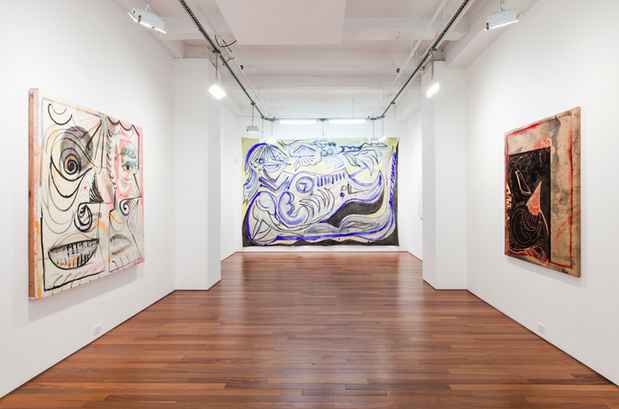Alex Crocker “Wyrd”
Ana Cristea gallery

This event has ended.
When the time comes to you at which you will be forced at last to utter the speech which has lain at the center of your soul for years, which you have, all that time, idiot-like, been saying over and over, you’ll not talk about joy of words. I saw well why the gods do not speak to us openly, nor let us answer. Till that word can be dug out of us, why should they hear the babble that we think we mean? How can they meet us face to face till we have faces? - Lewis, C.S. (1956) “Till We Have Faces.”
The gods have many faces and we, created in their image and likeness, wear many faces as well. Amid the new generation of process painters, British artist Alex Crocker turns the term on its head revealing that the coin is many-sided. The process refers to our powers of meaning-making, as well as the creative process itself. The show’s title comes from the Anglo Saxon word “wyrd” which means fate or personal destiny. The term refers to a process that continually merges patterns of the past into patterns of the present.
One can look at Crocker’s paintings as an experiment in memory bias. In painting, as in history, the content of our memories is altered in the act of recall as the past is informed by the present and vice versa. Everything is turning into something else while simultaneously being drawn in toward (and moving out from) its origin.
Crocker’s work reflects on our conception of beginnings, of the “early,” both in terms of the historical and of the formative stages of a painting. In addition to early Renaissance painters like Giovanni di Paolo, Sassetta and Fra Angelico and the artwork of 1970s and 90s metal and folk records, his imagery takes much of its source material and inspiration from Pagan Britain, Megalithic Art, the British Eerie, Sigils[1] and Magick[2]. As the meaning of worship evolves in contemporary life, we return to many of the ideas inherent in paganism and animism of ancient traditions. The faces may change, but the archetypes and origins remain the same. This potent mixture of the past and present reveals a rich contemporary vernacular that explores the fundamentals of painting (line and form, the space between illusion and matter, etc.) with new texture.
In the beginning, Crocker’s paintings are made un-stretched on the floor and painted on both sides, treated more like a cloth than a painting with a predetermined pictorial plane. As the image takes shape, the painting reveals it’s dominant side and the canvas is then stretched revealing just one of many faces.
Media
Schedule
from October 15, 2015 to November 14, 2015